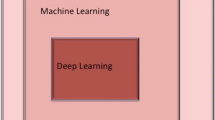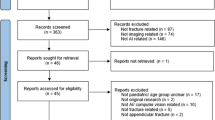Abstract
Objective
We aimed to perform an external validation of an existing commercial AI software program (BoneView™) for the detection of acute appendicular fractures in pediatric patients.
Materials and methods
In our retrospective study, anonymized radiographic exams of extremities, with or without fractures, from pediatric patients (aged 2–21) were included. Three hundred exams (150 with fractures and 150 without fractures) were included, comprising 60 exams per body part (hand/wrist, elbow/upper arm, shoulder/clavicle, foot/ankle, leg/knee). The Ground Truth was defined by experienced radiologists. A deep learning algorithm interpreted the radiographs for fracture detection, and its diagnostic performance was compared against the Ground Truth, and receiver operating characteristic analysis was done. Statistical analyses included sensitivity per patient (the proportion of patients for whom all fractures were identified) and sensitivity per fracture (the proportion of fractures identified by the AI among all fractures), specificity per patient, and false-positive rate per patient.
Results
There were 167 boys and 133 girls with a mean age of 10.8 years. For all fractures, sensitivity per patient (average [95% confidence interval]) was 91.3% [85.6, 95.3], specificity per patient was 90.0% [84.0,94.3], sensitivity per fracture was 92.5% [87.0, 96.2], and false-positive rate per patient in patients who had no fracture was 0.11. The patient-wise area under the curve was 0.93 for all fractures. AI diagnostic performance was consistently high across all anatomical locations and different types of fractures except for avulsion fractures (sensitivity per fracture 72.7% [39.0, 94.0]).
Conclusion
The BoneView™ deep learning algorithm provides high overall diagnostic performance for appendicular fracture detection in pediatric patients.




Similar content being viewed by others

Data availability
The trained AI presented in this paper and clinical dataset with its corresponding ground truth, AI readings’ results are available upon request from the corresponding author. The development dataset and the AI models, parts of commercial software, are not available to public.
Code availability
The code underlying this work can be found online at https://github.com/facebookresearch/detectron2.
References
Van Rijn RR, Lequin MH, Thodberg HH. Automatic determination of Greulich and Pyle bone age in healthy Dutch children. Pediatr Radiol. 2009;39:591–7.
Thodberg HH, Sävendahl L. Validation and reference values of automated bone age determination for four ethnicities. Acad Radiol. 2010;17:1425–32.
Offiah AC. Current and emerging artificial intelligence applications for pediatric musculoskeletal radiology. Pediatr Radiol. 2021. https://doi.org/10.1007/s00247-021-05130-8. Online ahead of print.
Mutasa C, Chang PD, Ruzal-Shapiro C, Ayyala R. MABAL: a novel deep-learning architecture for machine-assisted bone age labeling. J Digit Imaging. 2018;31:513–9.
Tajmir SH, Lee H, Shailam RS, et al. Artificial intelligence assisted interpretation of bone age radiographs improves accuracy and decreases variability. Skelet Radiol. 2019;48:275–83.
Pan I, Baird GL, Mutasa S, et al. Rethinking Greulich and Pyle: a deep learning approach to pediatric bone age assessment using pediatric trauma hand radiographs. Radiol Artif Intell. 2020;2: e190198.
Reddy NE, Rayan JC, Annapragada AV, et al. Bone age determination using only the index finger: a novel approach using a convolutional neural network compared with human radiologists. Pediatr Radiol. 2020;50:516–23.
England JR, Gross JS, White EA, et al. Detection of traumatic pediatric elbow joint effusion using a deep convolutional neural network. AJR Am J Roentgenol. 2018;211:1361–8.
Rayan JC, Reddy N, Kan JH, et al. Binomial classification of pediatric elbow fractures using a deep learning multiview approach emulating radiologist decision making. Radiol Artif Intell. 2019;1: e180015.
Choi JW, Cho YJ, Lee S, et al. Using a dual-input convolutional neural network for automated detection of pediatric supracondylar fracture on conventional radiography. Investig Radiol. 2020;55:101–10.
Kim DH, MacKinnon T. Artificial intelligence in fracture detection: transfer learning from deep convolutional neural networks. Clin Radiol. 2018;73:439–45.
Yu JS, Yu SM, Erdal BS, et al. Detection and localisation of hip fractures on anteroposterior radiographs with artificial intelligence: proof of concept. Clin Radiol. 2020;75:237.e1-237.e9.
Duron L, Ducarouge A, Gillibert A, et al. Assessment of an AI aid in detection of adult appendicular skeletal fractures by emergency physicians and radiologists: a multicenter cross-sectional diagnostic study. Radiology. 2021;300:120–9.
Tobler P, Cyriac J, Kovacs BK, et al. AI-based detection and classification of distal radius fractures using low-effort data labeling: evaluation of applicability and effect of training set size. Eur Radiol. 2021;31:6816–24.
Lindsey R, Daluiski A, Chopra S, et al. Deep neural network improves fracture detection by clinicians. Proc Natl Acad Sci U S A. 2018;115:11591–6.
Cheng CT, Ho TY, Lee TY, et al. Application of a deep learning algorithm for detection and visualization of hip fractures on plain pelvic radiographs. Eur Radiol. 2019;29:5469–77.
Jones RM, Sharma A, Hotchkiss R, et al. Assessment of a deep-learning system for fracture detection in musculoskeletal radiographs. NPJ Digit Med. 2020;3:144. https://doi.org/10.1038/s41476-020-00352-w.
Guermazi A, Tannoury C, Kompel AJ, et al. Improving radiographic fracture recognition performance and efficiency using artificial intelligence. Radiology. 2022;302:627–36. https://doi.org/10.1148/radiol.210937.
Joeris A, Lutz N, Blumenthal A, Slongo T, Audigé L. The AO pediatric comprehensive classification of long bone fractures (PCCF). Acta Orthop. 2017;88:123–8.
Wu Y, Kirillov A, Massa F, Lo WY, Girschick R. Detectron2. 2019. https://github.com/facebookresearch/detectron2. Accessed 13th August 2021.
Clopper CJ, Pearson ES. The use of confidence or fiducial limits illustrated in the case of the binomial. Biometrika 1934;404–413.
Chasm RM, Swencki SA. Pediatric orthopedic emergencies. Emerg Med Clin North Am. 2010;28:907–26.
Kim HHR, Menashe SJ, Ngo AV, et al. Uniquely pediatric upper extremity injuries. Clin Imaging. 2021;80:249–61.
Crowe JE, Swischuk LE. Acute bowing fractures of the forearm in children: a frequently missed injury. AJR Am J Roentgenol. 1977;128:981–4.
Zhou Y, Teomete U, Dandin O, et al. Computer-aided detection (CADx) for plastic deformation fractures in pediatric forearm. Comput Biol Med. 2016;78:120–5.
Cheema JI, Grissom LE, Harcke HT. Radiographic characteristics of lower-extremity bowing in children. Radiographics. 2003;23:871–80.
Ruffing T, Danko T, Henzler T, Weiss C, Hofmann A, Muhm M. Number of positive radiographic findings in pediatric trauma patients. Emerg Radiol. 2017;24:281–6.
Funding
Our research was sponsored by Gleamer, the developer of AI and software (BoneView™). The sponsor was involved with the study design. Manuscript writing was performed by independent authors who were not employees of Gleamer (Daichi Hayashi, Ali Guermazi).
Author information
Authors and Affiliations
Corresponding author
Ethics declarations
Ethics approval
All procedures performed in studies involving human participants were in accordance with the ethical standards of the institutional and/or national research committee and with the 1964 Helsinki declaration and its later amendments or comparable ethical standards. Our study was approved by the WellCare Group (WCG) institutional review board (approval number 20202256). The need for informed consent was waived because our study was retrospective and all images were totally anonymized and stripped of any clinical information. HIPAA requirements were strictly followed.
Conflict of interest
Ali Guermazi is a shareholder of BICL, LLC, and Consultant to Pfizer, Novartis, Regeneron, AstraZeneca, Merck Serono, and TissueGene.
JV, ZZ, AD, TN, AT, EL, AP, Albane Grandjean are employees of Gleamer.
AD is the Chief Technical Officer and co-founder of Gleamer.
NER is the Chief Medical Officer and co-founder of the Gleamer.
All other authors have no other conflict of interest to report.
Additional information
Publisher's note
Springer Nature remains neutral with regard to jurisdictional claims in published maps and institutional affiliations.
Supplementary Information
Below is the link to the electronic supplementary material.
Rights and permissions
About this article
Cite this article
Hayashi, D., Kompel, A.J., Ventre, J. et al. Automated detection of acute appendicular skeletal fractures in pediatric patients using deep learning. Skeletal Radiol 51, 2129–2139 (2022). https://doi.org/10.1007/s00256-022-04070-0
Received:
Revised:
Accepted:
Published:
Issue Date:
DOI: https://doi.org/10.1007/s00256-022-04070-0



